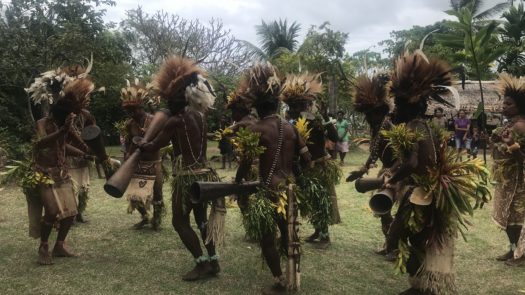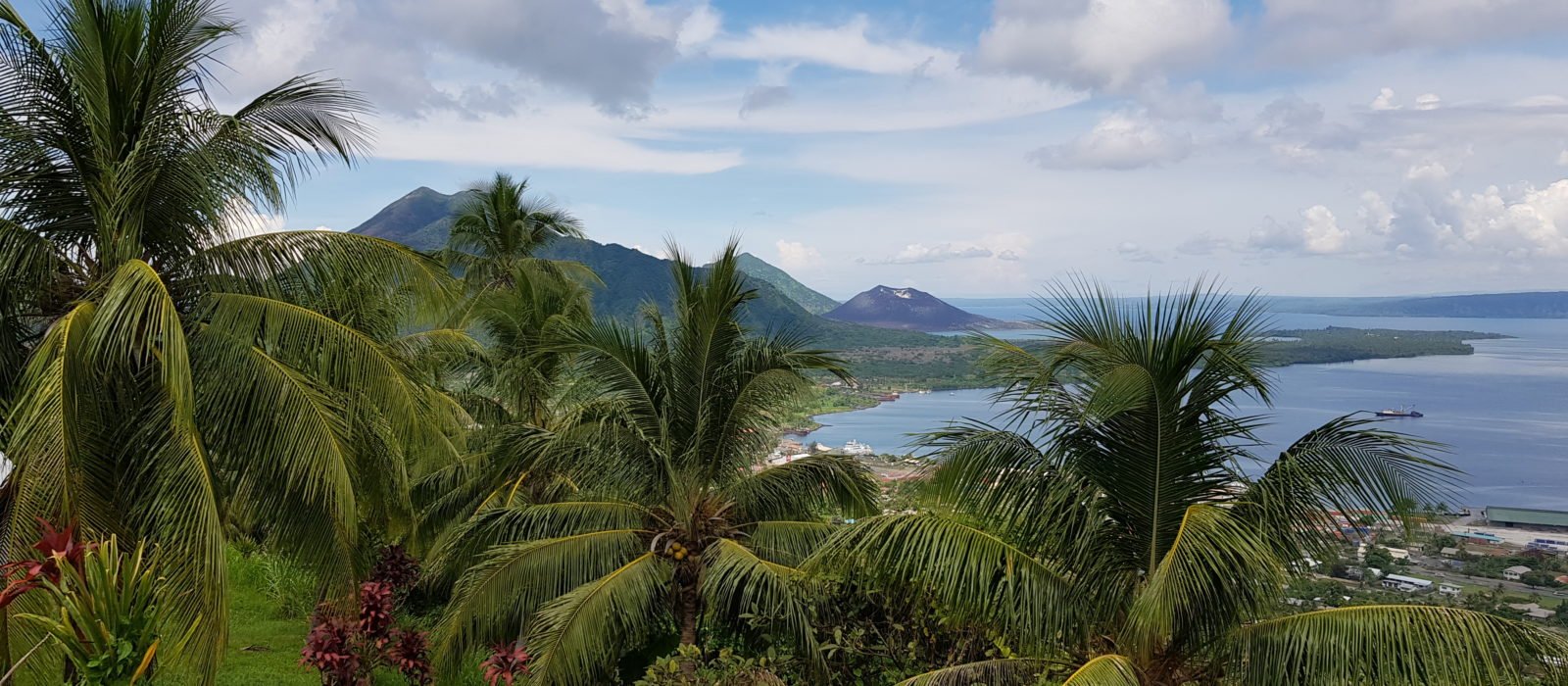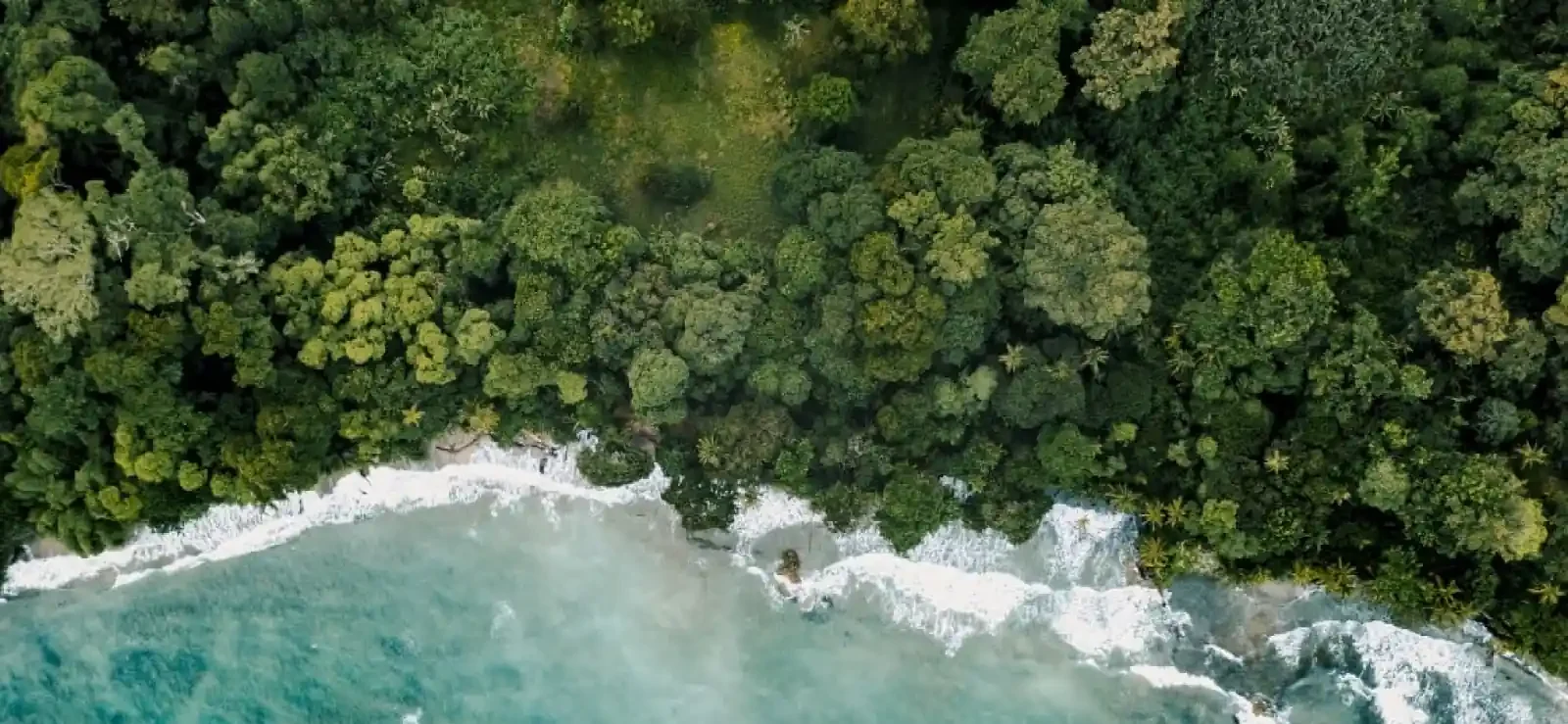Published on: July 16th, 2018
Last updated: July 16th, 2018
Hanging on to the edge of the map, in the South Pacific, sits the tropical country of Papua New Guinea. With a view to launching it as a destination for our more intrepid clients, we visited on an adventurous research trip in June. Travelling with our extremely knowledgeable guide Ray, we learned about the history, culture and sights of this incredible destination. One of the final frontiers, an untouched paradise and a joy to explore: Papua New Guinea.
East New Britain
As there are very few road systems in Papua New Guinea, the best way to get around is by light aircraft; our first stop was Rabaul in the East New Britain Province, a short flight away from capital Port Morseby. We arrived at Kokopo Beach Bungalows, with beautiful views out over the ocean and the nearby volcano. Just after sunrise, we took a banana boat out to a nearby cove and jumped into the warm water to swim alongside hundreds of wild spinner dolphins. An experience that was both exhilarating and magical, it felt like it was just us and the dolphins.
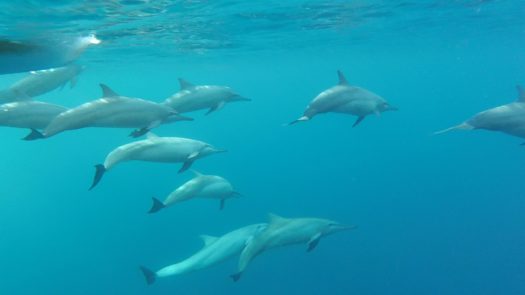
Our local guide Laurence took us around the local area of Kokopo explaining everything as we visited each place. He demonstrated these masks, which are unique to the East New Britain area and made by the Tolai people from bark cloth. Every July there is a four day mask festival involving cultural dancing, ritual performance, storytelling and fire dancing.
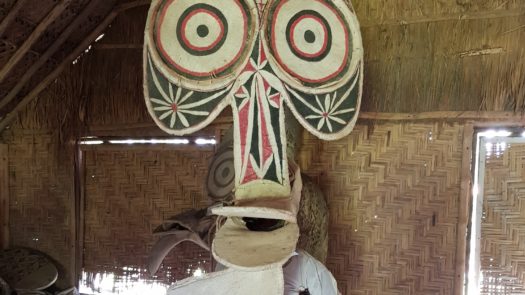
As well as intricate masks, Papua New Guinea has a lot of WWII history after it was occupied by the Japanese in 1942. There are labyrinths of tunnels dug by the Japanese army which can be visited easily. This one contained 3 barges that had just been left to rust when the war ended. We also visited what used to be a hospital as well as Admiral Yamamoto’s bunker.
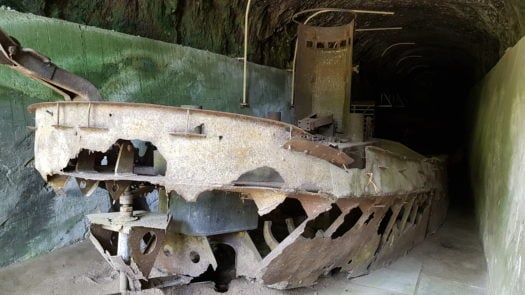
Rabaul was the capital of the East New Britain Province up until 1994 when the volcano erupted and covered 80% of the buildings in the township in ash. Parts of the town have been rebuilt but a large area closer to the volcano was too badly damaged and all signs of buildings have now gone. As a result, the capital was moved to Kokopo. In Rabaul, we visited the Vulcanology Observatory which was fascinating, and had the added bonus of providing excellent views over Simpson Harbour.
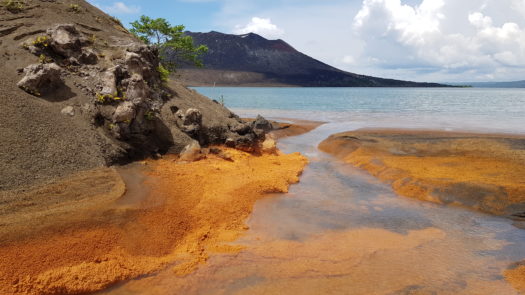
Mount Hagan
Our next destination was the Highland region of Mount Hagen, the third largest city in Papua New Guinea. Flying in, what was immediately noticeable were the neatly laid out farm plots that many of the population use grow and trade what they need. Thanks to the climate, Mount Hagan is a lush area; the higher we went the greener and mistier it became. On our first morning, we headed high into the hills to do a spot of bird watching and glimpse the birds of paradise that Papua New Guinea is famed for.

On our return from the bird watching lodge, we were invited into a small local village and were able to visit some of the communal areas and learn about the importance of traditions. The hut in this photo houses skulls from various members of the tribe who need to be avenged so that they can be laid to rest with the rest of their bones.
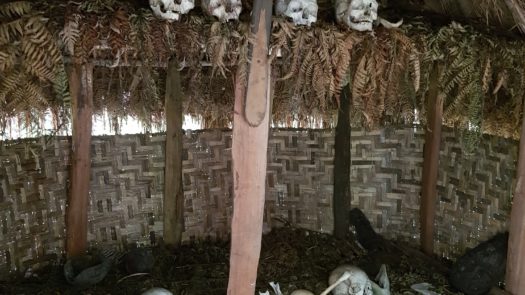
These are the Asaro Mudmen. The story goes that they had been defeated by their enemy and their lands had been taken so they waited until dusk and when the enemy saw them rising up from the banks of the river covered in mud they thought they were spirits and fled.
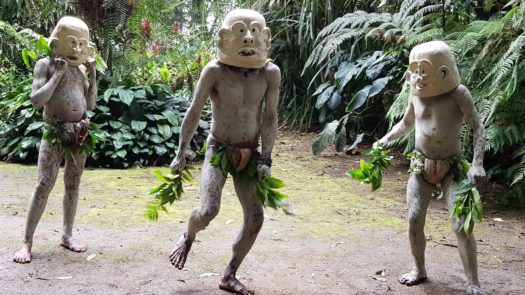
No visit to Mount Hagen would be complete without visiting the busiest market in Papua New Guinea. Here, people sell what they have grown or made, including peanuts, various root vegetables (one of the staples of the diet), fresh fruit as well as bags, clothes and live chickens!
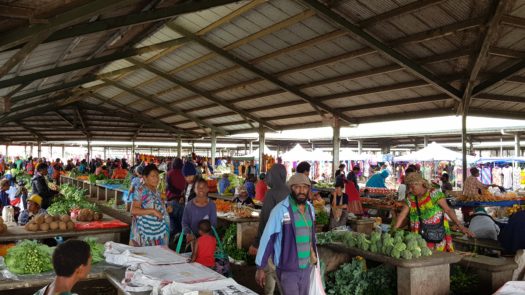
Tufi
Papua New Guinea is also considered as one of the best diving destinations in the world, so our last stop on this epic trip was to a dive resort called Tufi. We arrived into the ‘airport’ – a field surrounded by a fence and some local villagers who come to watch the planes come and go. This is the view from the deck where lunch and dinner is served… breathtakingly beautiful!
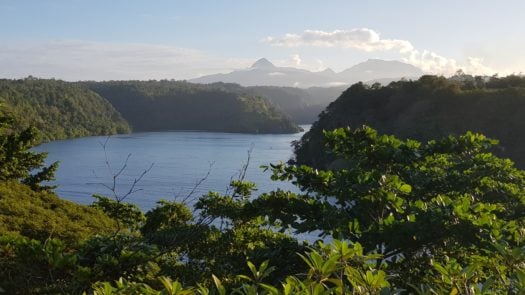
For non-divers, there are plenty of other excellent water based activities to do in Tufi. We took these sea kayaks out into the tropical fiords where the water is crystal clear so we could see all the coral beneath us.
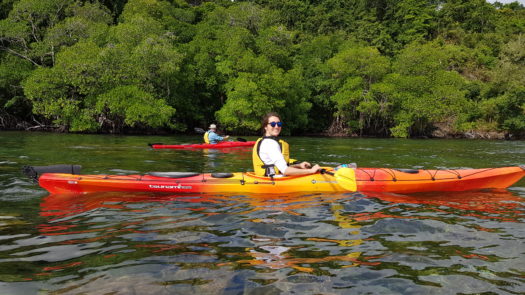
Neither of us had ever dived before, so we were lucky enough to do an intro dive right onto a reef, thanks to the guidance of our experienced diving tutors. It was the most pristine coral I have ever seen and we even found Nemo!
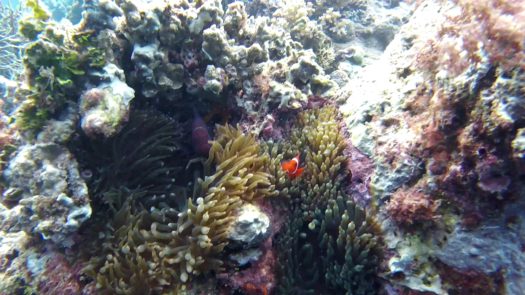
On our last day we visited the local village of Baga, where we were greeted by a performance and a lei (flower garland) for each of us, and they put on a Sing-Sing for us in traditional dress. A real highlight of the trip, it was wonderful to spend time with the people there, hear their stories and play with the kids (who just thought we were the funniest thing they had ever seen).
